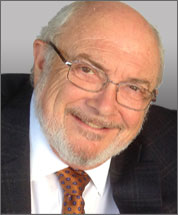Changes in Learning
Changes in Learning
Today, our Founder Ron Slee writes a blog post on the many changes in learning. He also makes a few grumbles about how his family gives him a hard time!
It has been some time since I wrote a blog on employee development. It is unusual for me not to be sharing my thinking with someone, in some cases anyone. I have been confronted on two fronts recently: My daughter Caroline who is a teacher in the desert in Southern California and my granddaughter who is pursuing her master’s degree in Hawaii.
Both love to provoke me. I can’t imagine why.
My granddaughter was excited to share a book they are using in one of her classes this semester – “The Narrative Gym.” It is about Communications. It is an amazing read and a more amazing subject to be teaching students in a master’s program. Of course, communication is one of the keys to life. We are social animals after all. COVID set us back somewhat in the communications area. Working from home is another example of how we reacted, or perhaps responding is a better way of saying it. Many businesses found that they could redesign their work. I know many people started to redesign their lives.
My daughter recently suggested another book – “Ruthless Equity: Disrupt the Status Quo and Ensure Learning for ALL students.” Talk about a powerful book. Many of us have become tired of the status quo when either protecting it or attacking it seems to be tearing apart everything that we have believed to be true. This book restores my soul. “All men are created equal” but then everything we do stresses the inequalities.
At Learning Without Scars we are aiming to help everyone identify their individual potential. That is an extremely difficult thing to do. People’s eyes glaze over when I talk about it. What I am trying to do though is provoke people to think. To think about everything and anything that they do. You know how envious I am of the Japanese societal approach to Kaizen. Make everything you do better every day. This is a view of work that in my mind allows people to become more engaged as people in what they do. They can CHOOSE how to do their job. They can CHOOSE to make their lives better by how they do their job. In the world that I grew up in, that was not the primary goal. Let me show you how this is done. Let me tell you what I just showed you. Then let me tell you again what I showed you. Now you try. I will be here to help so don’t worry. But just do it. Do it my way. Then practice it and get better at it. Make fewer mistakes and do it faster. Now you are doing the job. Just keep on doing it.
That is what I rejected in my early thirties when I started in the consulting world. I knew there were better ways to do things. 1980 when I opened R.J. Slee & Associates in Edmonton, Alberta was also when America was invaded by the Continuous Improvement Revolution. Total Quality Management arrived. Edward Deming and Joseph Duran brought their thinking back to America from Japan where they had been implementing it.
For a long time, I have used a tool I developed called “Five Things” that is aimed directly at the Continuous Improvement objectives. I ask people to list five things that they would like to change about their job that would make things easier for them personally. Then five things that they do that are a real pain to do. Finally, five things that they would like to change in their work to make things better for the company. Normally I do this in a group setting. We then take the individual items and put them on a flip chart, a blackboard or a screen so everyone can see them. You can imagine their surprise when many had the same thoughts. Not just that but their true shock at how many were on all three lists. So, something that would make their lives at work better, eliminate something that is a pain for them to do and at the same time is beneficial for the company. Of course, my questions are always the same. If that is true, then why haven’t we already addressed it?
I have a request please. Go get either of these books. Better still get both. Read them and think about the concepts and positions taken. Then send me an email with your thoughts. Let’s have a mini book club in the ether. Online.
In the meantime, for those of you who haven’t subscribed to our quarterly newsletter there is still time. The last one was published October 1st. You can subscribe at www.learningwithoutscars.com.
At Learning Without Scars we offer one hundred and thirty-eight Workforce Development classes. That is six hundred and eighty hours of learning. It provides sixty-nine academic credits.
At Learning Without Scars we offer twenty-eight Technical Schools classes. That is five hundred and sixty hours of learning. It provides fourteen academic credits.
At Learning Without Scars we offer two lecture series covering twenty hours of lectures which produces two academic credits.
That is one hundred and sixty-eight classes, which is one thousand two hundred and sixty hours of learning.
To say we have been busy with product development is a serious understatement. Not only are we interested in helping you identify your potential, but we also provide you with learning tools to help you achieve it. All the best in your pursuits.
The time is now.

